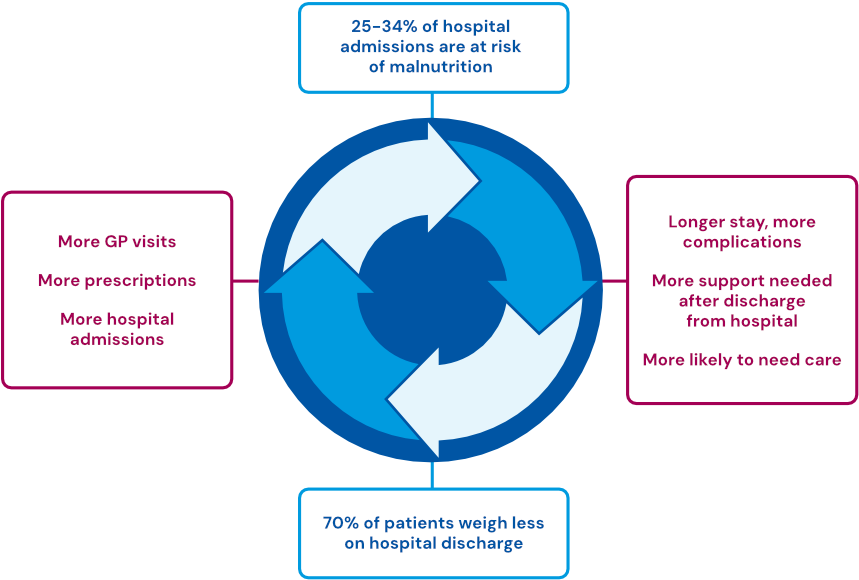- Older people over the age of 65, particularly if they are living in a care home or nursing home or have been admitted to hospital
- People with long-term conditions, such as diabetes, kidney disease, chronic lung disease
- People with chronic progressive conditions – for example, dementia or cancer
- People who abuse drugs or alcohol
There are also social factors that can increase the risk of malnutrition including:
- Poverty
- Social isolation
- Cultural norms – for example, hospitals and care homes may not always provide food that meets particular religious or cultural needs and so increase the risk of malnutrition whilst a person is away from their normal environment
Physical factors can also increase the risk of malnutrition. For example:
- Eating may be difficult because of a painful mouth or teeth
- Poor dentition or lack of usual dentures making it difficult to chew food
- Swallowing may be difficult (for example, following a stroke) or painful
- Losing your sense of smell or taste may affect your appetite
- Being unable to cook for yourself may result in reduced food intake
- Limited mobility or lack of transport may make it difficult to access food
- Relying on other people to help you eat and drink
In older people particularly, malnutrition makes them more susceptible to disease, in turn making their nutritional status worse and impairing recovery. The Malnutrition Carousel below describes this downward vicious spiral.
The Malnutrition Carousel



